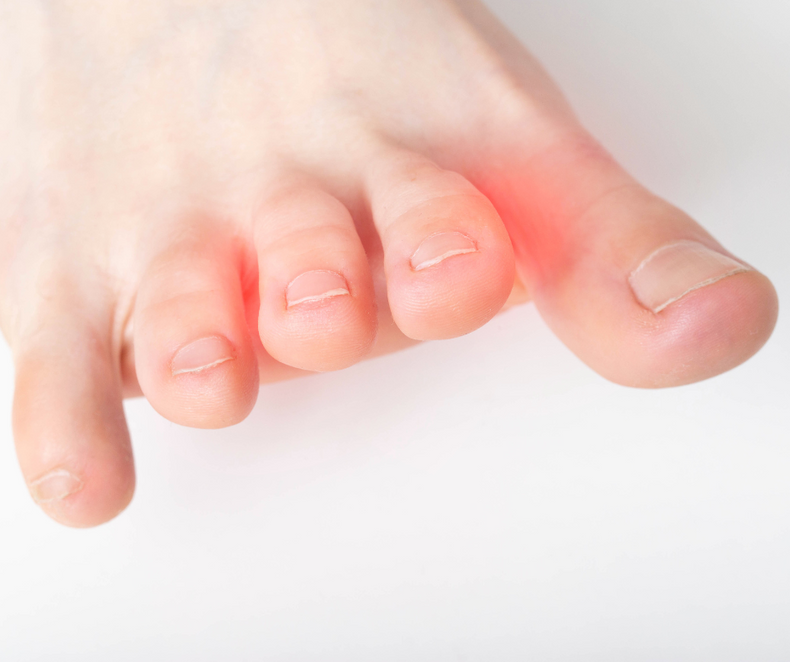Understanding Morton's Neuroma
Morton's Neuroma is a painful foot condition that can significantly impact one's quality of life. Characterized by a thickening of the tissue around a nerve leading to the toes, it often causes a sharp, burning pain or sensation of walking on a pebble. This condition is most commonly found between the third and fourth toes, and it can be exacerbated by tight footwear, repetitive activities, and high-heeled shoes. As anyone who has experienced Morton's Neuroma knows, finding suitable footwear is crucial for managing and alleviating the discomfort associated with this condition. In this blog post, we will delve into three essential features to consider when selecting footwear to relieve pain from Morton's Neuroma.
1. Cushioning and Arch Support
One of the primary concerns when choosing footwear for Morton's Neuroma is ensuring proper cushioning and arch support. A shoe with adequate cushioning helps absorb shock and reduces the pressure on the forefoot, where the neuroma is typically located. Arch support, on the other hand, helps distribute weight evenly and minimizes strain on the affected nerve.
Look for shoes that offer a well-padded insole, especially in the ball of the foot area. However, keep in mind that in some cases too much padding may irritate the nerve as it causes more shifting of the metatarsal heads and hence may increase the pressure on the nerve. Arch support can be achieved through built-in features like contoured footbeds or removable insoles that can be replaced with custom orthotics. Remember that a combination of cushioning and arch support can significantly improve your walking experience and help alleviate Morton's Neuroma pain.
Alternatively look for shoes with a pronounced forefoot rocker profile. This design aids in reducing the bending motion of the metatarsal joints, minimizing irritation to the affected nerve. Stiff rocker soled shoes offer an innovative way to address Morton's Neuroma discomfort by promoting a more anatomically aligned gait.
2. Roomy Toe Box
A roomy toe box is essential to avoid unnecessary pressure on the affected area. Shoes with a narrow or tight toe box can compress the toes and exacerbate the pain associated with Morton's Neuroma. Opt for footwear styles that allow your toes to spread naturally, reducing the squeezing effect and providing much-needed relief.
Toe box depth and width are crucial factors to consider. Look for shoes that offer a wider and deeper toe box, allowing your toes to move freely without restriction. Some brands even offer "toe-friendly" designs that prioritize toe splay and comfort. By giving your toes the space they need, you can help prevent further irritation of the neuroma and promote a more comfortable stride.
3. Low Heel and Supportive Sole
High-heeled shoes can worsen Morton's Neuroma by tilting the foot and increasing pressure on the forefoot. Choosing footwear with a low, stable heel can help alleviate this pressure and provide better support for your feet. A supportive sole that absorbs shock and provides adequate cushioning can further enhance your walking experience and reduce pain.
Consider shoes with a heel height of one inch or lower. A wider, more stable base can help distribute your weight more evenly and reduce strain on the forefoot. Look for outsoles made from materials like rubber or EVA that provide both cushioning and durability, ensuring a comfortable and supportive foundation for your feet.
Exploring Alternate Solutions
While choosing appropriate footwear is crucial for managing Morton's Neuroma, it's important to explore aleternate solutions as well. Metatarsal pads, for instance, can be placed in the shoe to help redistribute pressure away from the affected nerve. These pads provide a cushioning layer behind the metatarsal heads that reduce irritation on the nerve and promote a more natural foot alignment.
Another option to consider is Correct Toes toe spreaders. These devices help maintain proper toe alignment, preventing crowding and reducing pressure on the neuroma. By encouraging natural toe splay, Correct Toes can contribute to improved foot health and decreased pain.
Finding relief from Morton's Neuroma pain requires a multifaceted approach, and proper footwear is a critical component. Cushioning and arch support, a roomy toe box, and a low heel with a supportive sole are essential features to consider when selecting shoes. Additionally, exploring alternate solutions like metatarsal pads and Correct Toes toe spreaders can further enhance your comfort and alleviate discomfort. Prioritizing these features in your footwear choices can make a substantial difference in managing Morton's Neuroma and maintaining your overall foot health.

